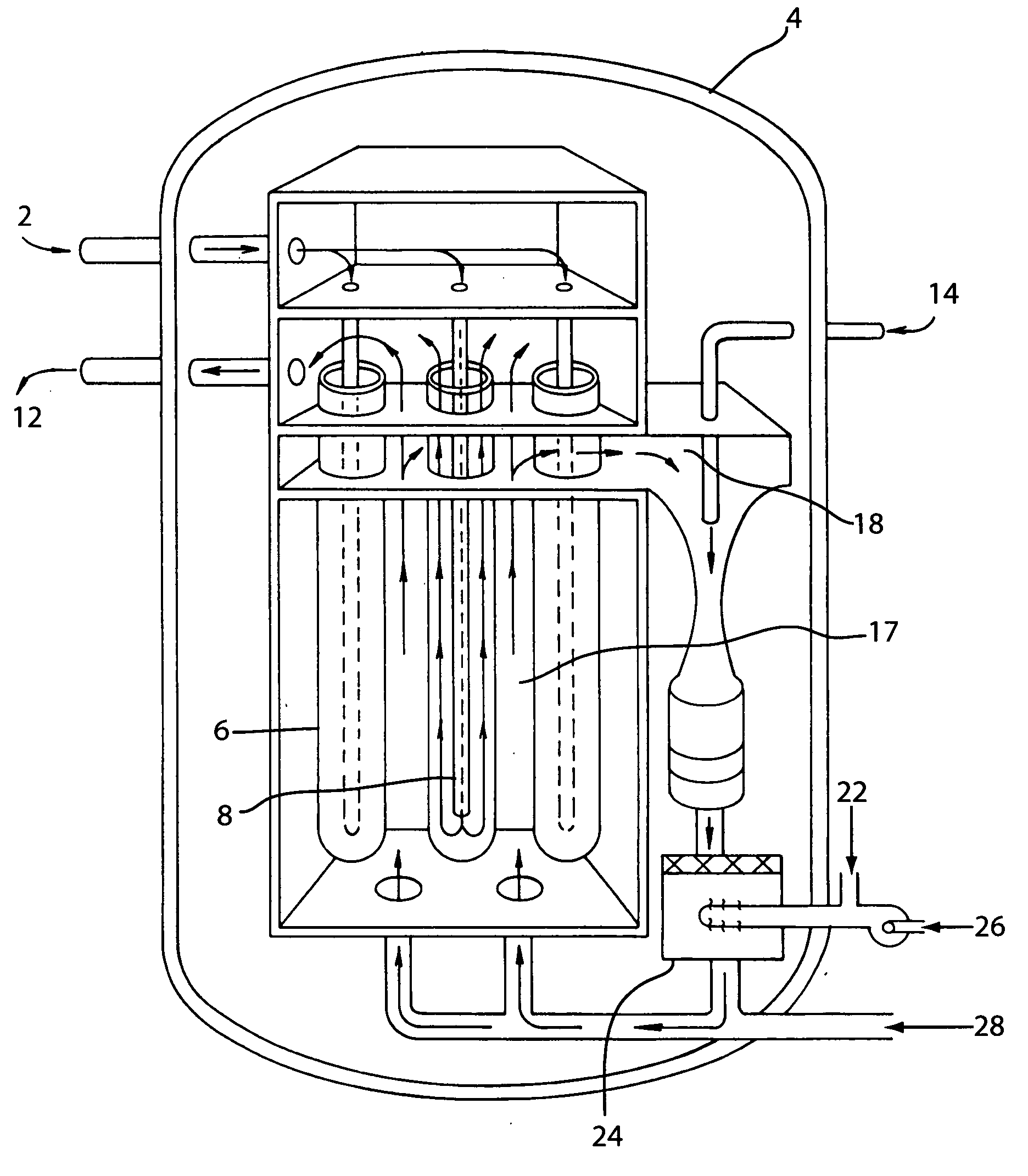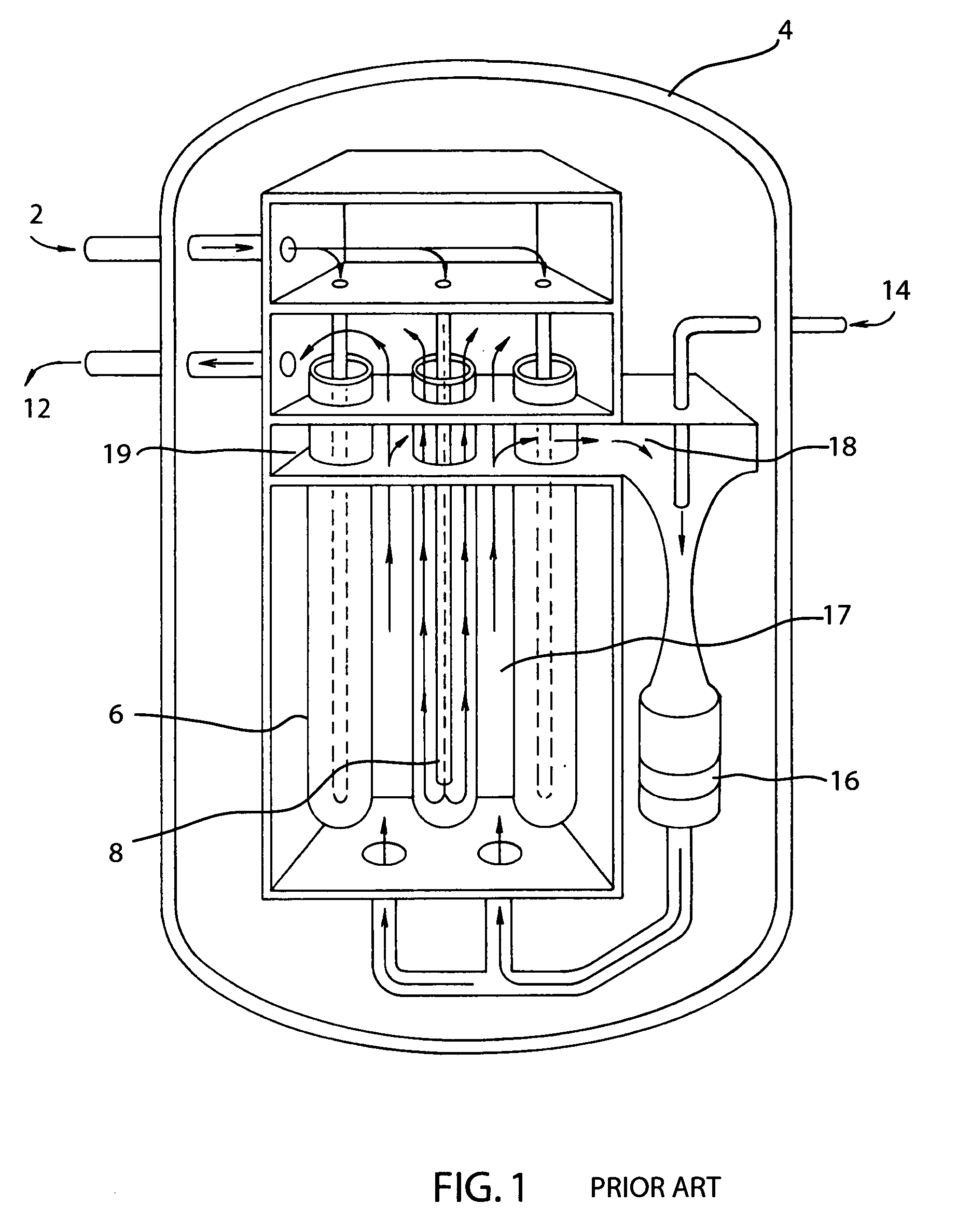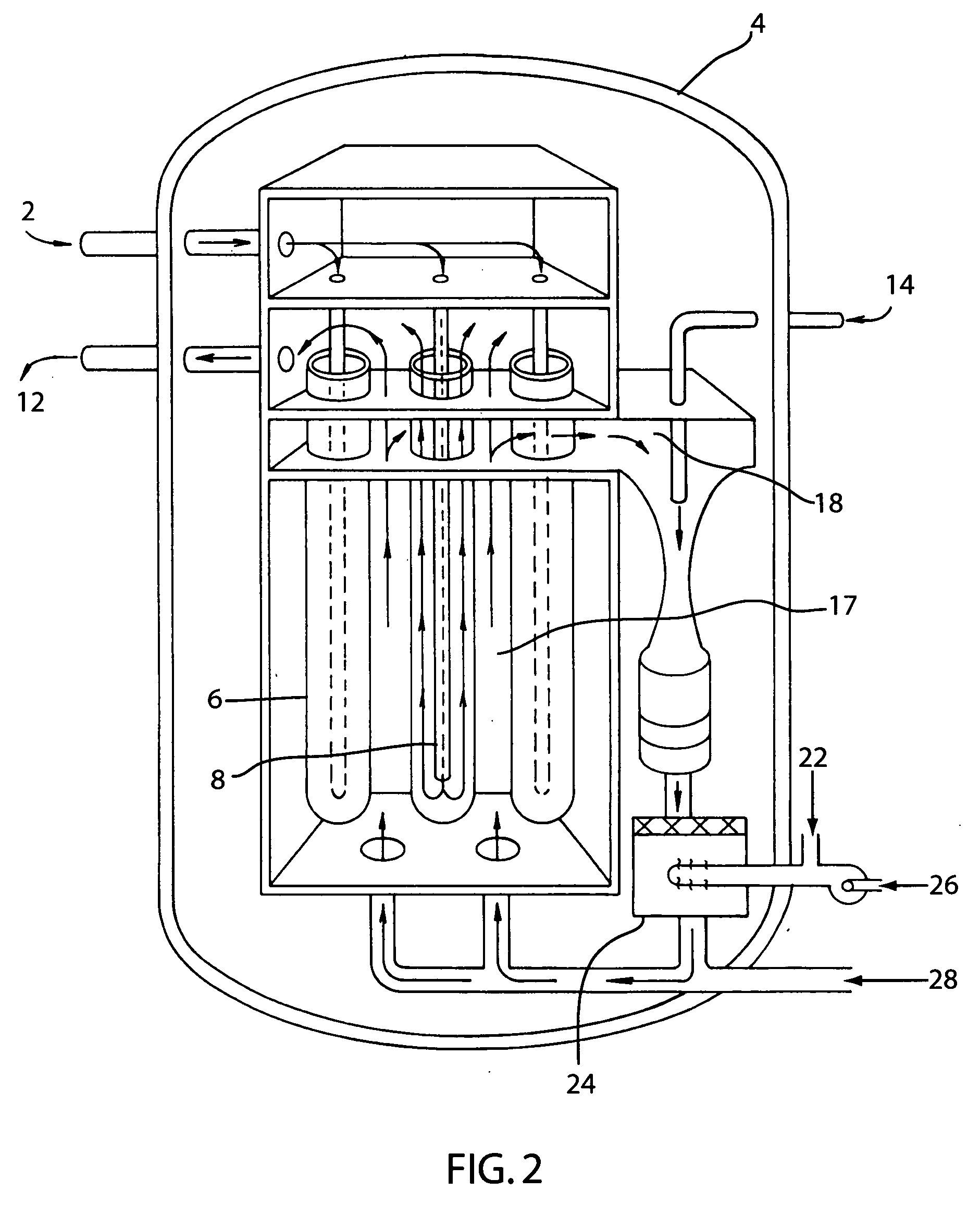Anode gas stack start-up heater and purge gas generator
a technology of anode gas and generator, which is applied in the direction of electrochemical generators, cell components, cell component details, etc., can solve the problems of recuperative heat transfer, significant energy loss from hot gas exhaust, and deleterious stack heating process, so as to facilitate the heating of solid oxide fuel cell generators
- Summary
- Abstract
- Description
- Claims
- Application Information
AI Technical Summary
Benefits of technology
Problems solved by technology
Method used
Image
Examples
Embodiment Construction
[0020]The present invention provides for an anode gas side heating during startup of a solid oxide fuel cell (SOFC) generator. The start-up heaters of the prior art used hot air blown into the air feed tubes to heat the seal-less design SOFC generators. Unfortunately, this heats the generator very slowly since the thermal conductivity through the parts of the generator where the air comes into contact with are poor thermal conductors. Moreover, the air passes back over its own feed tube before being exhausted, which transfers a significant portion of the heat back to the used gas before it is exhausted.
[0021]The present invention heats the SOFC generator by circulating heated anode side gas. As is known in the art, the anode gas flow path is the fuel flow path. During normal operation of a SOFC, the major portion of the anode gas flow is recirculated spent fuel gas (about ¾) with fresh fuel addition representing a minor portion. Therefore, when anode gas is heated prior to admission...
PUM
| Property | Measurement | Unit |
|---|---|---|
| temperature | aaaaa | aaaaa |
| temperature | aaaaa | aaaaa |
| temperature | aaaaa | aaaaa |
Abstract
Description
Claims
Application Information
 Login to View More
Login to View More - R&D
- Intellectual Property
- Life Sciences
- Materials
- Tech Scout
- Unparalleled Data Quality
- Higher Quality Content
- 60% Fewer Hallucinations
Browse by: Latest US Patents, China's latest patents, Technical Efficacy Thesaurus, Application Domain, Technology Topic, Popular Technical Reports.
© 2025 PatSnap. All rights reserved.Legal|Privacy policy|Modern Slavery Act Transparency Statement|Sitemap|About US| Contact US: help@patsnap.com



